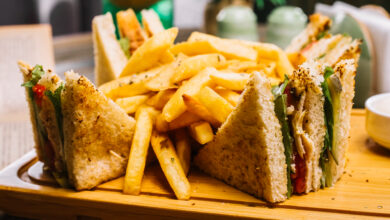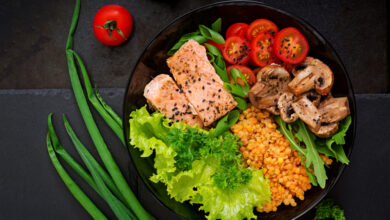Can 3D Printers Make Edible Food?

3D printing technology has come a long way in recent years, and one area where it has shown particular promise is in the realm of food.
But can 3D printers actually make edible food, and if so, what are the benefits and limitations of this technology?
In this article, we will take a closer look at the current state of 3D food printing and explore the potential of this exciting new field.
How Does 3D Food Printing Work?
A 3D printer is printing food. Image source: Smart Meetings
The basic principle of 3D food printing is similar to that of traditional 3D printing, in which a machine builds up an object layer by layer using a material such as plastic or metal.
In the case of food, the material is typically a food-grade paste or powder that can be extruded through a printing head to create a desired shape.
There are a few different types of 3D food printers currently on the market. Some use syringe-based extrusion, in which the food material is pushed through a small nozzle to create the desired shape.
Others use a more traditional “fused deposition modeling” (FDM) process, in which the food material is melted and extruded through a heated nozzle to create the desired shape.
Advantages and Limitations of 3D Food Printing
Advantages of 3D food printing:
- Efficient and precise use of ingredients can help to reduce food waste.
- Allows for the creation of personalized diets for individuals with specific dietary needs such as food allergies or medical conditions.
- Enables the creation of food in unique and visually appealing shapes, which can be appealing to consumers.
- Potential to produce food in areas that are currently food-insecure, or in space exploration.
- Ability to create new food products that otherwise would not be possible through traditional methods.
- Potential to produce food with enhanced nutritional value
Limitations of 3D food printing:
- The cost of equipment is high, making it difficult for small and medium-sized food producers to adopt the technology.
- Lack of clear food safety regulations for 3D-printed food, which can make it difficult for producers to comply with legal requirements.
- Limited to small-scale production, which can make it difficult to meet the demand for large-scale food production.
- Limited availability of food-grade materials for 3D printing.
- Lack of scalability.
- Still in the experimental phase and not yet widely available to consumers.
Applications of 3D Food Printing
A burger is prepared under a 3D food printer. Image source: Analytics India Magazine
3D food printing is a novel technology that uses a printer to create food in three dimensions. It involves layering and printing food ingredients in a specific pattern to create a complete food product. The technology has a wide range of applications in the food industry, including personalized nutrition, food art, and even space food.
- Personalized Nutrition: One of the most significant applications of 3D food printing is personalized nutrition. This technology allows for precise control of the nutritional content of food, making it possible to print customized meals for individuals with specific dietary requirements or food allergies. It is also useful for people with medical conditions that require a specific diet, such as diabetes or celiac disease.
- Food Art: 3D food printing can be used to create unique and visually appealing food designs. The technology allows for the creation of intricate and delicate patterns and shapes that are not possible with traditional cooking methods. It is a tool for food artists and chefs to express their creativity and push the boundaries of food presentation.
- Space Food: Another exciting application of 3D food printing is in the field of space exploration. The technology enables the creation of space food with specific nutritional and physical properties, such as being lightweight and non-perishable. It is a crucial step towards the goal of sustainable space exploration and provides astronauts with a fresh and healthy food source in space.
- Mass Customization: 3D food printing also offers the potential for mass customization in the food industry. It enables the production of small batches of custom-made food products, reducing waste and increasing efficiency. The technology could also help address the global food crisis by allowing for the creation of affordable and sustainable food sources.
- Food Supplementation: In addition to creating custom meals, 3D food printing can also be used to print food supplements. The technology allows for precise control of the ingredients and the dosage, making it a useful tool for people who need specific vitamins and minerals to maintain their health.
- Special Occasions: 3D food printing can be used to create unique and visually appealing food designs for special occasions, such as weddings, birthdays, and other celebrations. It allows chefs and bakers to create intricate and customized food products that add a special touch to any event.
- Food Education: The technology can also be used in food education, both in schools and professional culinary programs. It provides students with a hands-on experience in the creation of new and innovative food products, allowing them to develop their creativity and problem-solving skills.
- Food Research and Development: 3D food printing is also an important tool for food research and development. It enables scientists and food technologists to create new food products and test their sensory, physical, and nutritional properties. This information can then be used to develop new food products that are healthy, sustainable, and delicious.
Future of 3D Food Printing
Despite the current limitations, the future of 3D food printing looks promising as many easy to use 3D printing software are being launched like SelfCAD. Advances in 3D printing technology, such as the development of more advanced food materials and the use of multi-material printing, have the potential to overcome some of the current limitations.
Additionally, the development of more efficient and cost-effective 3D food printing equipment could make it more accessible to small and medium-sized food producers.
The potential benefits of 3D food printing are numerous. For example, 3D food printing could enable more efficient and sustainable food production, which could help to reduce food waste and improve accessibility and nutrition. Additionally, 3D food printing could enable the creation of personalized diets for individuals with specific dietary needs, such as those with food allergies or medical conditions.
Furthermore, 3D food printing can also enable the creation of food in unique and visually appealing shapes, which can be appealing to consumers.
In addition, 3D food printing could also play a role in addressing global food security challenges by making it possible to produce food in areas that are currently food-insecure, or in space exploration.
This technology could also allow for the production of food with enhanced nutritional value, or the ability to create new food products that otherwise would not be possible through traditional methods.
Conclusion
Despite the challenges facing the wider adoption of 3D food printing, the potential benefits of this technology are significant.
3D printing technology has the potential to revolutionize the way we produce and consume food by allowing for more efficient, sustainable, and personalized food production.
However, in order for this technology to be widely adopted, it is important that food safety regulations are clarified, and that the cost of equipment is reduced.
Additionally, ongoing research and development is needed to overcome the current limitations, and to explore new possibilities for 3D food printing.
With continued investment in this technology, 3D food printing has the potential to play a key role in addressing global food security challenges and improving the food industry as a whole.
If you found our article informative, check the rest of our blog.




